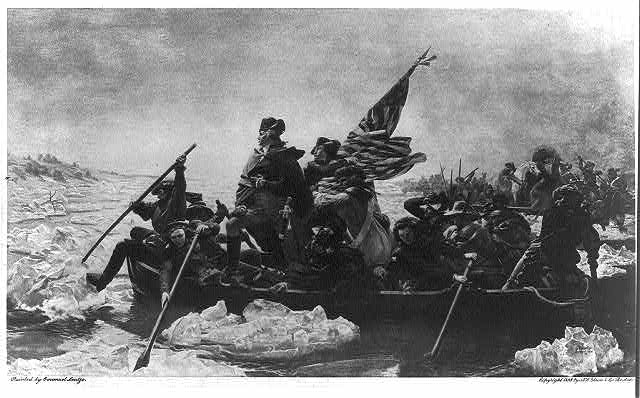"What is the dog doing there? It really would run away when it heard the guns fire. So why did Paul Revere put it in the picture? Well, most people like dogs. So we think he wanted people to take the side of the Americans by thinking, 'Those mean British are shooting at a dog!'" - Fifth graders, Morgan Elementary School, Holyoke, Massachusetts
Famous images deeply influence ideas about history, typically from a particular political position, and more profoundly than a much larger body of information from texts, teacher lecture, and class discussion. Yet partly because they are so influential–and typically loaded with details–analysis of these iconic images offers an engaging and useful means to investigate what the evidence says about what really happened. At the same time, such images offer insights into the beliefs, purposes, and era (often much later than the events pictured) of the artists who made them.
This week's post offers a rich set of resources for classroom use of four iconic images from early American history.
As elementary teachers brainstormed at a recent Emerging America Teaching with Primary Sources program lesson study, one fifth grade teacher volunteered, "I would love to have my students examine the famous painting of Washington Crossing the Delaware. How closely does it match the facts of the event? When was it painted? What was the artist trying to communicate?" To my delight, later that week, the ever useful Library of Congress Teacher blog happened to post on–Washington Crossing the Delaware! The blog post offers comparison of a less familiar painting of the same event. Of even greater interest, the blog links to Washington's own descriptions of the engagements at Trenton and Princeton.
The question of picture versus reality came up in the workshop because we had been looking at Emerging America's online activity on the[permalink href="5863"] Boston Massacre[/permalink], in which students compare Paul Revere's engraving with written accounts by eyewitnesses. (Revere published the image at the time.) As the student comments above demonstrate, the exercise is particularly useful for analysis and practice of persuasive writing.
The Stanford History Education Group published yet another in-depth comparison from the Revolution, in this case images of the Battle of Lexington. This activity includes a recording of a scholar thinking aloud about the image. (Watch the "Why historical thinking matters" video, and advance to scene "3".)
An earlier post in this blog referenced another activity from the Stanford History Education Group's Beyond the Bubble website. This activity uses the 1932 painting of the First Thanksgiving
Questions
What questions would be meaningful to students about these comparisons? Questions might be not just content-specific about each event, but also generalizable about questions of the importance of history and cultural understanding.
- How is this comparison of iconic painting of 100-300 years later similar and/or different from the eyewitness narrative?
- First Thanksgiving, Boston Massacre, Battle of Lexington, and Crossing the Delaware–how are they all similar and how different?
- Why do we seem to want and need icons?
- What more recent icons do we have? The steel beams from 9-11, for example. Or photos and video of President Obama's 2009 Inauguration.
- How "true" to the event in question are the icons?
- How do the cases where we have images from the time of the event differ from those where we have only written accounts? How do these media differ?




